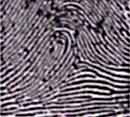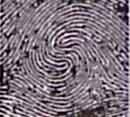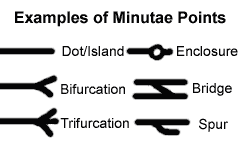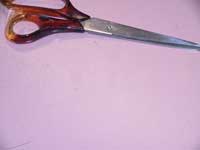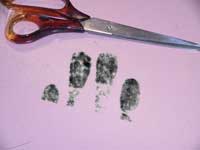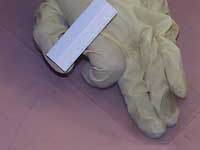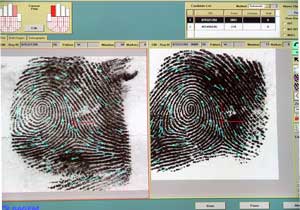
|
Fingerprints are tiny and often invisible clues left at a crime scene. They are left because:
Fingerprints have been a useful tool in forensics for many years. Their value is based on the fact that your fingers and thumbs have a characteristic pattern of ridges and that no two fingerprints are the same. This means:
Fingerprints are distinctive not only because of their patterns of arches, loops or whorls, but also because of a range of other variations called minutiae. Minutiae are the tiny details that make each print quite distinctive.
More information on the basics of fingerprints can be found at the following websites.
Fingerprints are left on a surface because of perspiration passing through the pores of the fingers. The perspiration is left on the surface as a fingerprint. Depending on the type of surface, one of a number of techniques can be used to collect the fingerprint. Normally fingerprints left at the scene of a crime are invisible (latent) and need to be "dusted" to be seen. When special powder is brushed on to the prints, small particles of powder cling to the print. The print is then 'lifted off' using sticky-tape. Ordinary household sticky-tape is sometimes used; the picture on the right shows a special sticky sheet with a label for writing on.
Fingerprints taken from a crime scene are compared with the fingerprints of suspects using computer software. The picture shows two fingerprints being compared on a computer at the Tasmania Police Forensic Laboratory. The faint green markings on the prints are 'points of similarity' placed by the operator with a mouse click. Police try to find as many fingerprints at a crime scene as possible, with at least 7 matches generally needed to 'prove' the match.
Computers are used to store information about fingerprints, as there are now many millions of prints on file in Australia. Computers also scan and automatically classify fingerprints. In Tasmania this has meant that what was once the work of 12 police officers is now the work of a very small team. A central file for fingerprints is stored in Canberra and can match a fingerprint entered from anywhere in Australia within minutes.
Work out the answer to the question below. Share your answer with others and your teacher. A known villain has an NCIC classification of FPC/ 53TTPIAA07DOCM04DI62 What can that classification tell you about the fingerprints on the villain's left hand middle finger and his right hand thumb? Discuss your answer with others. Compare your fingerprints with others Test your detective skills
|



